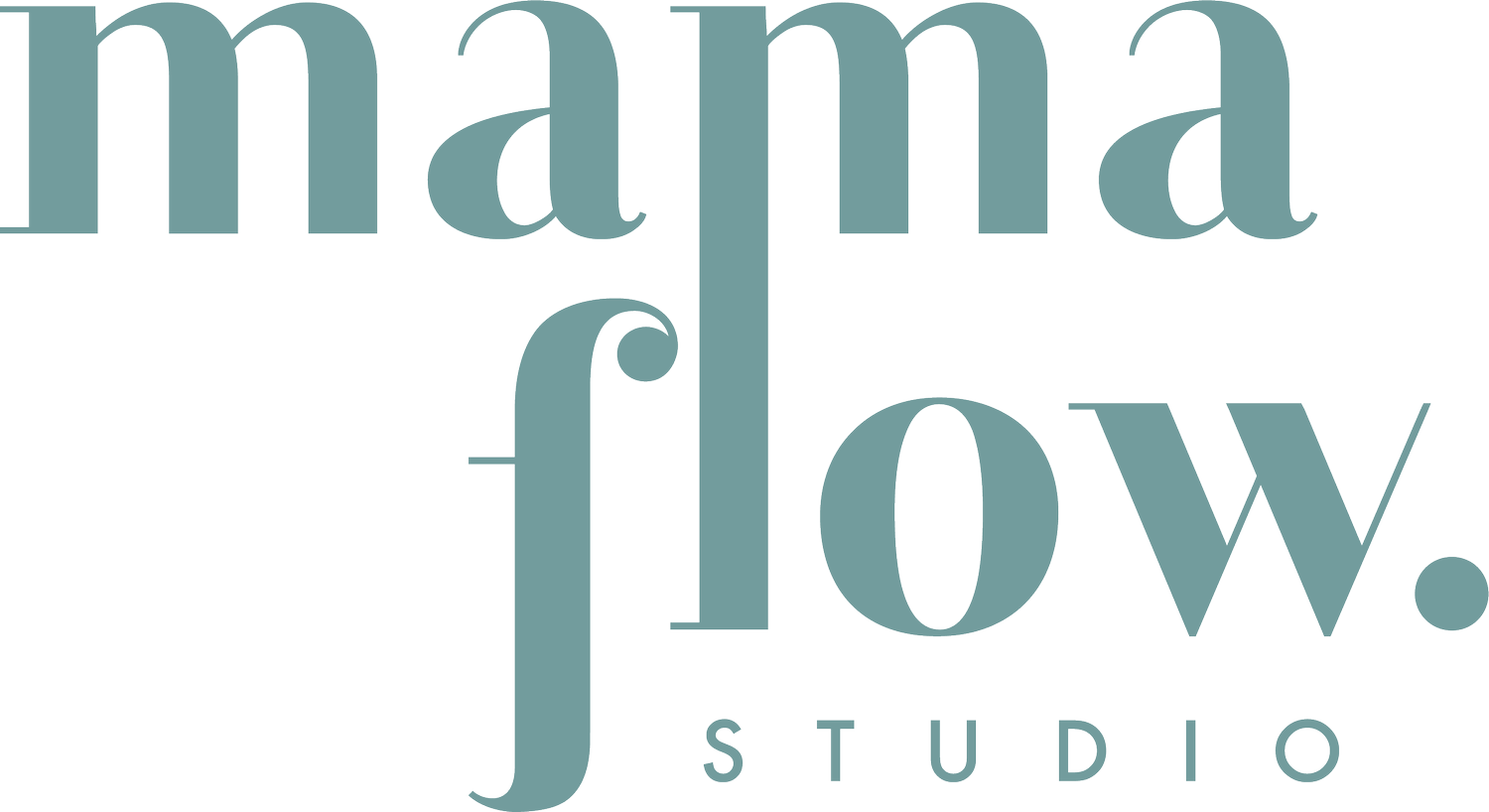5 Mistakes Moms Make During Postpartum Recovery
Cat Gieser, Founder of Mama Flow Studio, Postpartum Fitness Specialist
Postpartum recovery can be challenging on every level. Your body is going through SO much physically, emotionally, and mentally, and without the proper guidance and support, it’s easy to overlook important steps to ensure a full recovery from both pregnancy and birth.
Most moms only follow the recovery advice provided to them by an OBGYN and/or midwife, which is incredibly important, but oftentimes leaves out crucial steps in the recovery process, particularly pertaining to pelvic floor and core health.
It’s why my DMs are flooded with questions and stories from postpartum moms about not knowing how to start healing from diastasis recti, feeling broken after their doctor told them that leaking while sneezing, running, or jumping is part of the journey of motherhood, and wondering if things like waist trainers will really help them close their abdominal gap and shrink their low belly pooch.
UGH. The fact that so many moms have these questions just shows the lack of knowledge and support that moms are given when it comes to postpartum recovery.
There is SO much to share on this topic, but to kick it off, let’s talk about the 5 common mistakes moms make when it comes to postpartum recovery, so YOU can avoid them and strengthen your core and pelvic floor the right way!
If you’re one of those people who just wants to skip straight to the solution 🙋🏻♀️, go ahead and check out my 8-week postpartum Core Restore Program!
Mistake #1: Most postpartum moms don’t get assessed for pelvic floor and core-related issues
During the postpartum check-up with an OBGYN or midwife, most moms will have things like weight, blood pressure, diet & nutrition, reproductive organ size, mental health, and c-section scar looked at.
However, it is not within the typical scope of practice or expertise for OBGYNs or midwives to screen for pelvic floor and/or core-related issues AND more often than not, I’ve heard many many many stories, including my own, of issues like incontinence and diastasis recti being dismissed or normalized during their postpartum visit.
It’s important for all postpartum moms to know that pelvic floor and core-related issues like leaking, pelvic heaviness and pain, diastasis recti, and back/shoulder/neck pain are all COMMON, but by no means NORMAL.
A pelvic floor physical therapist can screen postpartum moms for any pelvic floor or core-related issues/symptoms and provide support with the healing process.
I’m also a huge advocate for all postpartum moms learning how to screen themselves for these issues to understand the warning signs and/or self-assess if a pelvic floor physical therapist is not available to you. It’s also helpful knowledge to have to check on progress with healing and if symptoms return.
Mistake #2: Most postpartum moms think pelvic floor recovery = kegels
I’m holding back my aggression with this one because I know that some doctors and midwives actually tell postpartum moms to “just do your kegels and your pelvic floor will be fine”.
HARD STOP. Please run the other way if this is the advice you’re getting.
Kegels are NOT the end-all-be-all when it comes to pelvic floor recovery.
While kegels can be helpful for some, they can also increase symptoms for some postpartum moms - hello leaking!
The pelvic floor should be responsive and supple - meaning it should be able to both relax and contract to support the task at hand. Kegels only focus on the contraction aspect of pelvic floor movement, so you’re only training half the movement that the pelvic floor muscles should be doing.
Some moms have overly tight pelvic floor muscles, so they’re almost too good at the contraction part. In these cases, doing more kegels creates more tension in the pelvic floor muscles, weakening them over time and making the person more susceptible to leaks.
So when it comes to pelvic floor recovery, we need to retrain the muscles to BOTH relax and contract (when needed) and work with the entire deep core system to help stabilize the spine and pelvis.
Mistake #3: Most postpartum moms try to jump back into their pre-baby fitness routine after the 6/8-week check-up
If all looks good during the postpartum check-up, most postpartum moms are given the green light by their doctor or midwife to begin exercise.
Typically, this comes with little to no advice on where to start, things to avoid, or warning signs to look out for.
So naturally, most moms are drawn to what they’ve done in the past.
The problem is, at 6/8-weeks postpartum, your body is STILL healing from pregnancy and birth!
The bleeding may have stopped and incisions are now closed, but the integrity of your muscle and tissue after the increased demand from pregnancy and birth has been compromised and is still building back strength.
Spending the time rehabbing your body and building back foundational strength, especially in your pelvic floor and core will not only help make you stronger in the long run, but also help you avoid and/or heal from postpartum issues like diastasis recti, prolapse, incontinence, the stubborn mommy pooch, and back/shoulder/neck pain.
Mistake #4: Most postpartum moms focus on traditional core exercises and cardio to target the mommy pooch
Let’s first talk about the mommy pooch - what it is and why so many moms struggle with it?
The rectus abominis muscle, which is known as the 6-pack muscle, has two sides that are connected along the midline by tissue called the linea alba.
During pregnancy, to allow room for the growing baby, the linea alba stretches and thins, creating a separation of the abdominal muscles. This is known as diastasis recti.
Diastasis recti is the body’s natural response to pregnancy and occurs in nearly 100% of all pregnant women by the end of the third trimester. Some moms spontaneously heal from diastasis recti postpartum, while others need more intentional rehab to heal.
When diastasis recti is not addressed, moms typically complain of feeling like they continue to look pregnant, have a low ab pooch that will not go away regardless of how many crunches or cardio they do, and/or notice coning along the midline while doing exercises like crunches and planks.
The severity of the abdominal gap and softness of the linea alba will determine how much your belly bulges and when/how your midline cones during exercises.
At the core (pun intended) of healing from diastasis recti and building back linea alba tension is retraining pressure management within the deep core muscles - think diaphragm, deep ab muscles, spinal muscles called the multifidus, and the pelvic floor.
Cardio alone may help you shed belly fat, but it does not specifically target deep core training and will not address diastasis recti.
Traditional ab exercises like crunches, planks, and leg raises are much too advanced for moms in the early stage of core rehab. These exercises place a lot of pressure on the abdominal wall, which can exacerbate diastasis recti.
So what should you be doing instead? Well, we’ve got to get your entire core unit functioning together as a team, so it reflexively turns on and off based on the activity at hand. The foundations of diastasis recti recovery and pelvic floor and core recovery as a whole includes deep core breathing, posture + alignment, and moving through exercises that progressively load your deep core muscles.
Mistake #5: Most c-section moms don’t mobilize their scar
This one hits home for me. I remember reading about c-section scar massage before my postpartum check-up and then asking my midwife about it out of curiosity.
“So, should I be doing it?” I asked.
She looked at me with a slightly condescending look and said, “Nope. You’re good - you’re healing well.”
Knowing what I know now, I wish I went with my instincts and ignored her advice.
It turns out that scar mobilization is an important piece of c-section recovery.
C-section scars are not just superficial, they’re 7 layers deep. As that scar heals, scar tissue builds, which is much less mobile and elastic than regular healthy tissue. It can also bind to other tissue forming what is known as adhesions.
Adhesions prevent the skin, fat, and fascia from gliding smoothly over one another as what happens with healthy tissue. This can cause restrictions within the tissue, fascia, and surrounding muscles.
Some women with c-section scars that have untreated adhesions may complain about pelvic floor, abdominal, back muscle, or even digestive issues because of how the adhesions are restricting movement.
While most moms won’t connect these internal issues to their c-section scar, most do complain about the numbing and shelfing that may occur at or on top of the scar.
C-section scar mobilization through massage and/or cupping helps break down scar tissue and adhesions to prevent and help heal from any complications brought about by tissue formation around the scar.
It’s never too late to try to mobilize a c-section scar, although it’s important to note that mobilization should only begin once the incision site is fully healed.
Now, your mind may be completely blown right now, and you may be wondering why no one ever told you these things until now.
If you’re asking yourself:
How do I learn more about the things I SHOULD BE DOING to recover my postpartum core and pelvic floor?
Where do I even start?
How do I learn how to assess myself for core and pelvic floor issues?
Is there some sort of plan I can follow for core and pelvic floor rehab?
Keep reading, I’ve got you, mama!
My 8-week Core Restore program is the answer to all your questions.
Think, 8-weeks of quick, impactful, follow-along classes to help you heal and strengthen your core and pelvic floor muscles.
The program is organized in an easy-to-follow daily schedule and all classes are under 25-minutes!
Core Restore is jam-packed with additional educational info to help you thoroughly understand your pelvic floor and core muscles and you’ll have direct access to me for any additional coaching and questions along the way.
Regardless of whether you sign up for Core Restore, my hope is that you feel more knowledgeable about your postpartum body and have a better understanding of how to support your healing process. Never forget that you are a warrior, mama and that your body deserves all the love and attention after all that it has accomplished!




